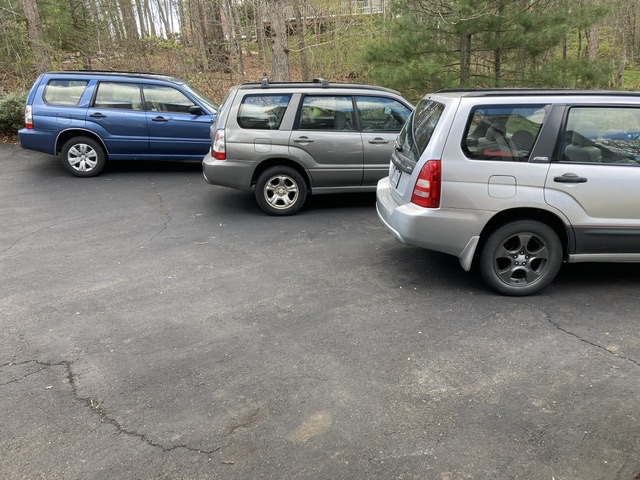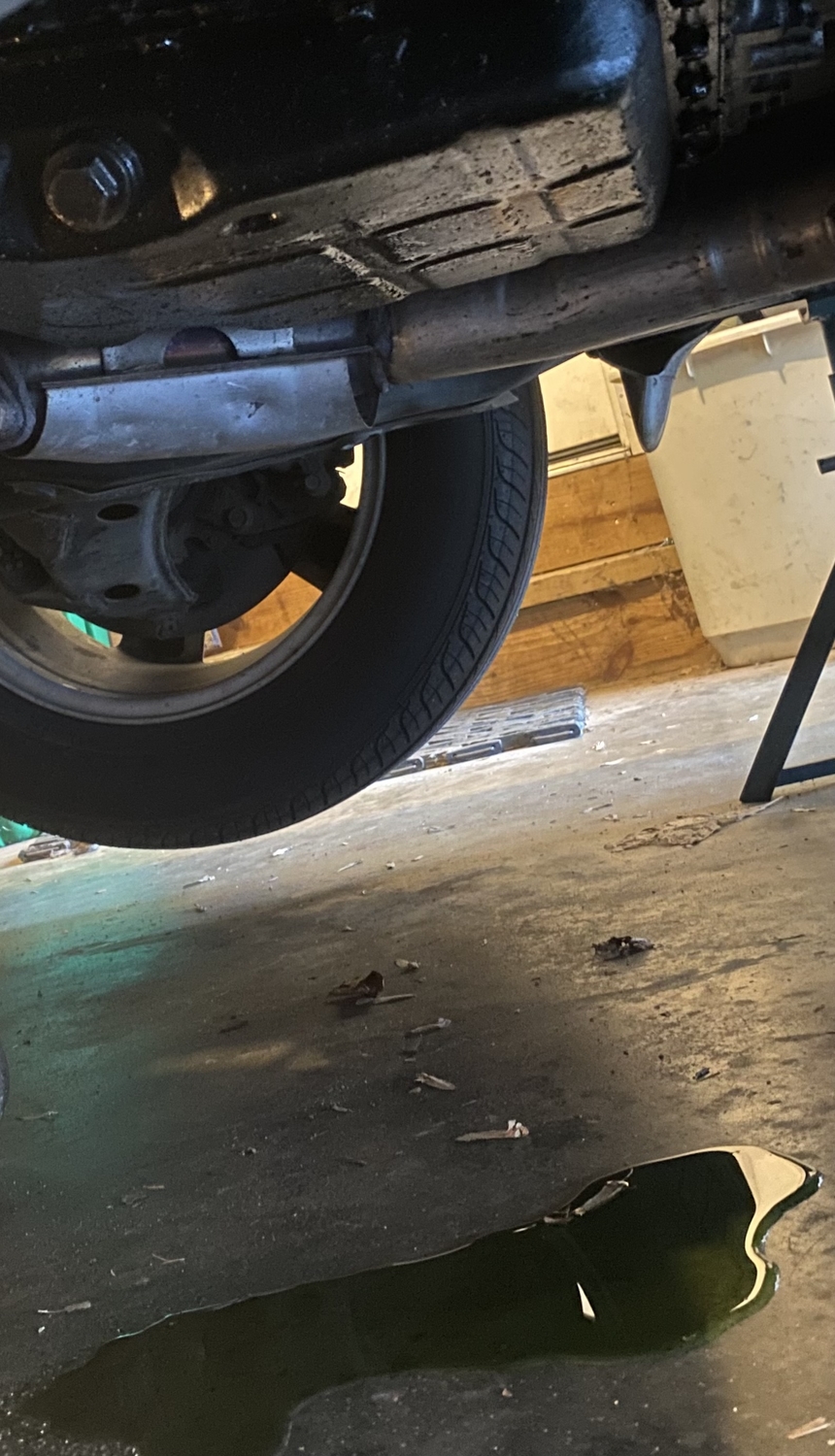
Stevo F
Members-
Posts
414 -
Joined
-
Last visited
-
Days Won
6
Content Type
Profiles
Forums
Gallery
Store
Everything posted by Stevo F
-
I’m having my mechanic replace the tires engine in my 2003 Forester. He ordered and received a 62K miles JDM EJ25 and he should be installing it this week. Should I have him replace the headgaskets before it goes in, or were the headgaskets on the JDM NA motors better than the cheap composite headgaskets used on the USDM engines?
-
OK, I was able to match up the L "light" and S "Sense" wires from the 3 wire plug to the 2 wire plug. I temporarily attached female spade connectors to the wires and hooked them up to the alternator and it was charging at 13.8- 14.0 volts, right where I wanted. Having a built in voltmeter is new to me, and I noticed on some occasions it would go down to around 12.7 volts for a few seconds, then back up to upper 13's- I assume there's no issue there, as the Duralast alternator I was running temporarily was doing something similar.
-
I went ahead and ordered the older style 2 pin connector for my Subaru refurbished older tyle alternator. I just want to make sure I wire it in correctly. Based on this diagram- which pin on the 3 pin connector correlate to which pin on the 2 pin connector. I found this diagram of the rear of the alternator and the 2 pin connector.
-
Update- I sourced a used OEM alternator off eBay and it worked for about 2 minutes then stopped charging. Back to the drawing board. Thr only alternator they had worked all thr time is the POS Duralast unit. Just wondering if I should get an old style plug, and wire it in and use the unused ‘98 alternator or might that cause issues with the electrical system?
-
I replaced the alternator on my 2003 Forester a few months ago with an OEM new alternator. Now I'm finding, with a voltmeter, that either it takes a few seconds to art charging or not at (it takes several starts for battery voltage to go from 12 to 14 volts). I installed a crappy Duralast alternator and it pushes 13.5- 14 volts all the time. I'd rather use OEM than Duralast (it was originally on my Outback when I bought it and I replaced it with OEM on that car). I already have an unused Subaru remanufactured alternator that I had purchased for my '98 Legacy, but sold the car before I could install it. My question is whether I can use the older alternator on my Forester. I'm not that concerned that it's only an 85 amp vs. my current 90 Amps, but the electrical plug is a different shape, although it has two wires like on my 2003 Forester. I figure I could just wire in the 90's style plug, but are there are design differences between 1990's and 2000;'s Subaru alternators that would prohibit me from using the older alternator?
-
At the start of the hot weather, I started up the air conditioning on the Outback I bought from my Dad last year and noticed that the A/C compressor would run for 30- 40 seconds, then cycle off for another 30 seconds, then repeat. I obtain an HVAC thermometer with a probe, that I inserted into the center dash AC vent. I found that when the compressor would run, it would get the air temperature down to about 48 degrees F, then the compressor kicks off and the temperature coming out of the ducts would rise to the upper 50's, then it would kick on again. I had my mechanic hookup up his gauges to the A/C system and he found the refrigerant was 1/2 lb, low, so he added refrigerant and checked for leaks (he couldn't find any). I'm not sure when my father last had the A/C serviced (he doesn't recall). My mechanic said the compressor wasn't cycling so all seemed well. When I drove it, I checked the air again, putting it on recirculate as you are supposed to with air conditioning, then it would cycle again 30- 40 seconds the same way, but when taking it off of recirculate, the compressor did stay on and kept the A/C temp at 53- 54 degrees, pretty cold, but not really as cold as it should be. I rigged up the thermometer to measure the air temps as I drove the car 45 miles home from my Dad's (90 degrees and humid), and as I drove, if I kept the fan speed on 3 and didn't recirculate, keeping the temp around 53 degrees, the compressor never cycled, but if I dropped the fan speed to 2, or put it on recirculate, then air temp dropped to about 49 degrees and it started cycling on and off again. So I have concluded that it seems like there is a switch that is switching off the compressor when the A/C temp drops (possibly to keep the evaporator from freezing up) but it seems to be shutting it off at too high of a temperature. Is there such a switch, and is there a way to test it see if it's functioning properly?
-
Yes, OEM alternators are pricy but worth it compared to other rebuilts. Other rebuilders only replace defective parts but Subaru replaces anything that might fail so it's as good as a new one. I recall pricing one for my 2005 Impreza and it was around the same price as you found. I kjust put an OEM on my 2000 Outback and luckily for that year it was only around $250
-
I figured it out the other day. I took another look at the heater hoses and there was wet coolant residue at the heater core ends of the hoses. The clamps weren't super tight, so i tightened them down (I replaced the heater hoses and used new clamps 5 years ago). I figured I was pushing on the heater hoses when accessing the transmission dipstick when I was checking the ATF level, and the loose clamps let some coolant leak out when the hoses were pushed on. I ran the car and even pushed on the heater hoses, but the connections to the heater core are still dry.
-
I checking over the 2003 Forester in the garage, and shut it off after checking automatic transmission fluid level. I heard a dripping sound from underneath and saw a small puddle under the transmission pan. I put it up on Jack stands and got underneath, but the dripping had stopped. I confirmed it was engine coolant but looking up underneath, I couldn’t determine where it came from. My first thought was from a heater hose, since it was from that general area, but both heater hoses were clean and dry (they were replaced 5 years ago). Also no indication of leaking from the heater core. Not sure where else to look for coolant leaks near the rear of the engine. Are these are any other small coolant hoses on the EJ251 engine? I recall my old EJ22 had a small coolant hose that ran to the IACV. Not sure where else to look for coolant leak from that part of the car.
-
Last year, I bought my father's well kept, low mileage 2000 Outback Limited with automatic transmission and only 70K miles. The car runs and drives great, however acceleration seems laggy for an EJ25 4EAT Subaru, especially accelerating up hills. I've owned a number of other Subaru's of this vintage and none were as laggy, including my old EJ22 '98 Legacy. My '03 Forester with 250K miles and the same EJ251 engine, 4EAT transmission, and 4.11 drive ratio seems much peppier. I know the Outback weighs several hundred pounds more than the Forester, but I can't believe that would be make noticeable difference. I wish there was an inexpensive way to get a little more performance from this car. Too bad the power mode hack for 2nd gen Legacy's can't be done on this car (that only applied to Phase 1 4EAT's), and Sport mode didn't come out until 2005. I can see why the H6 was such a popular option for this model when it came out in 2001.
-
I had two '05 Outback Sports which I miss driving now. I believe there are a lot of aftermarket headlight options, including projectors to run LED/ HID bulbs in. Fun to drive cars and I got close to 30 MPG to boot. The '05 engine was a bit of an oddball too, as it was the first year for the EJ253, but starting in '06 it had variable valve timing. The '05 motor was solid as a rock in both of mine.
-
I have a low mileage (68K mile) 2000 Outback Limited that I recently acquired from my Dad. I recently replaced the alternator, and the following week, I noticed occasional vibration when turning the steering wheel at low speeds. The first thing I suspected was drive belt tension since I had just removed and reinstalled the belt when I replaced the alternator. Tightening the belt seemed to make it worse, and backing off the belt tension seemed to alleviate the vibration, but I still feel it occasionally. It also doesn't matter if the vehicle is moving or not and it while shake pretty well when moving the steering when parked in the garage. It will shake often but not all the time. I'm suspecting something with the power steering pump- could it need a good power steering fluid flush (power steering fluid level is good), or is the pump itself at fault?
-
Thr headlights on my 2003 Forester are yellowing like most (I polish them periodically to remove it) but now the passengers side is leaking and getting moisture inside, so I think it’s time to replace them. Are there any good aftermarket brands that would be durable enough not to leak or yellow for a few years? I’d love to find a set of projectors, but it appears that they aren’t mass produced for the 2003- 2005 Forester, other than finding a set of lights retrofitted as projectors, but I don’t intend $1,000 for a set of headlight housings, so likely want a set of good aftermarket housings that will last awhile. .




